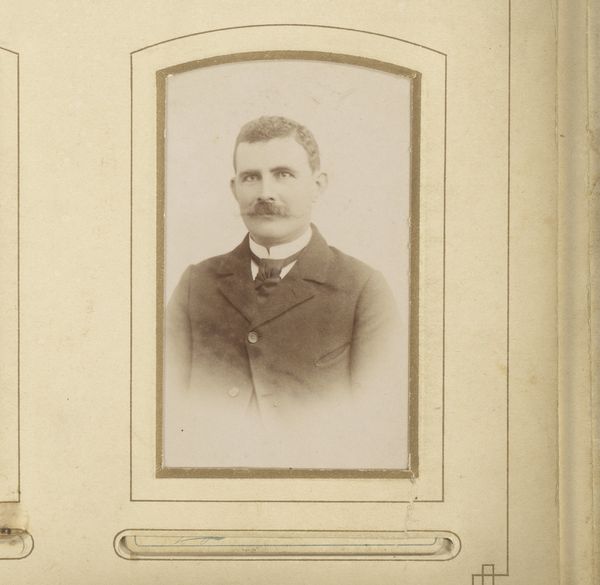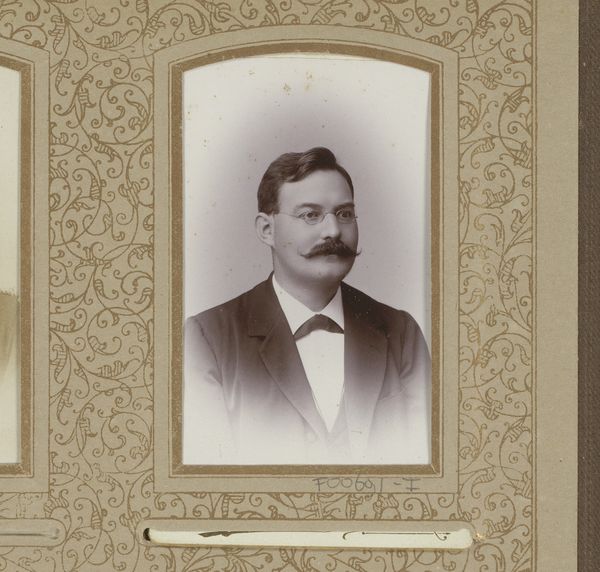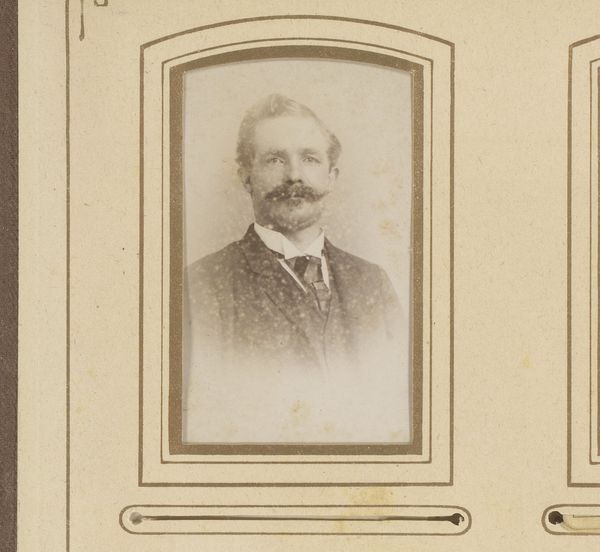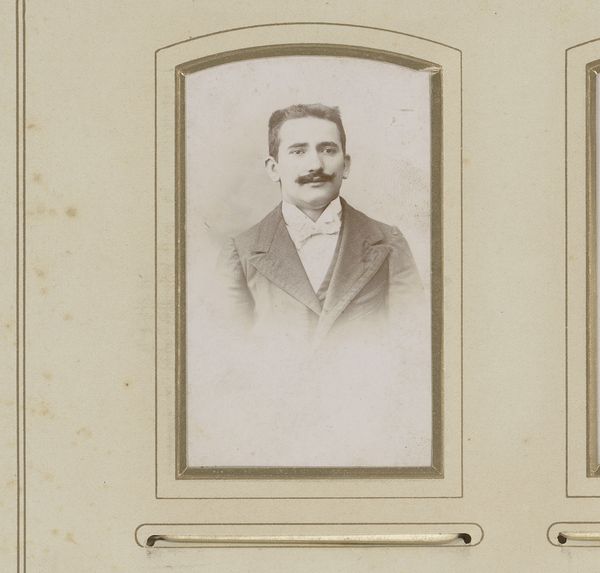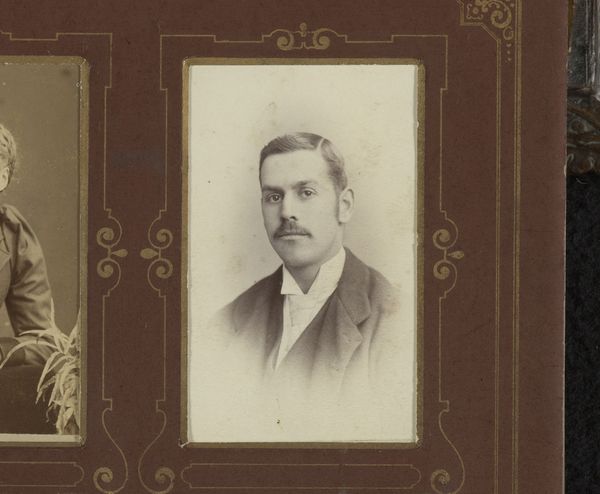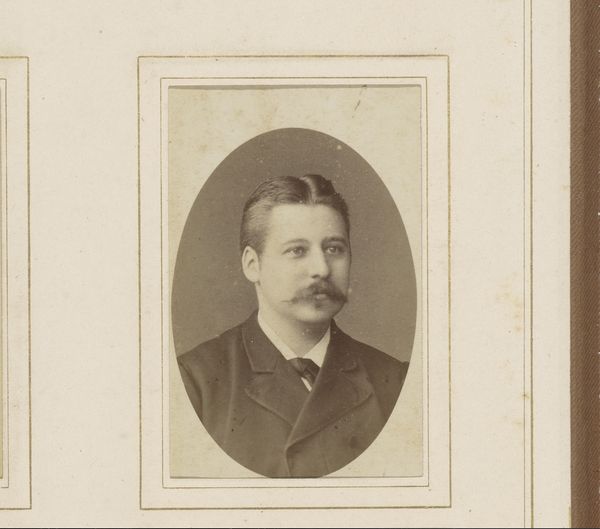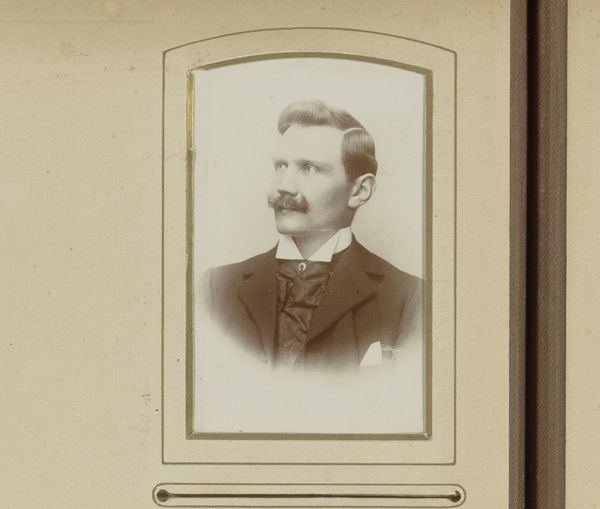
print, photography, gelatin-silver-print
#
beige
#
portrait
#
aged paper
#
earth tone
#
16_19th-century
#
parchment
# print
#
photography
#
historical photography
#
brown and beige
#
yellow element
#
gelatin-silver-print
#
19th century
#
warm-toned
#
realism
#
gold element
Dimensions: height 82 mm, width 51 mm
Copyright: Rijks Museum: Open Domain
Curator: Here we have a photographic portrait, tentatively titled "Portret van een man met snor"—Portrait of a Man with a Moustache—likely dating from the late 19th century, between 1888 and 1900. The photographer is noted as Otto Lindner, and the work is a gelatin silver print. Editor: The photograph has an almost ghostly quality, don’t you think? It’s like a whisper from a bygone era. That incredible moustache practically leaps off the aged paper. Curator: Absolutely, that 'whisper' you perceive is due to how these portrait studios democratized image-making; it granted people a method for self-representation which once was the domain of elite painted portraiture. What interests me is the studio setting, how it shapes not just the likeness, but also conveys societal aspiration and norms. Editor: The fellow’s moustache is, of course, magnificent, commanding respect…or perhaps amusement, depending on your predisposition. I find the whole composition incredibly intriguing, so symmetrical, and oddly comforting despite the rather stern expression of the subject. I am rather drawn to the ornate detail, I wonder if it was hand painted to decorate the album? Curator: Well, the framing is characteristic of the period’s aesthetics; we must consider how the cultural expectation placed considerable significance on formality. The print, and indeed, photographic processes themselves, mirrored the prevailing emphasis on documenting societal stature, reflecting notions about appearance, status, and belonging in the social structure of the era. The embellishments were standard decorative features included in many photo album presentations of that era. Editor: The sternness now suggests dignity, doesn't it? Thinking about how important the photographic image has become in cementing place within the larger family history album. The lighting even casts a sort of golden reverence on him. Curator: It makes you consider that the creation of likeness had significance; family and social narratives depended upon images like these. The print technology enhanced accessibility of imaging across socioeconomic stratifications in a way that was transformative for culture at that time. Editor: Seeing this print brings out the melancholy nostalgia I sometimes feel viewing historical imagery; these beautiful reminders of the lives lived. Curator: Indeed, in art history we explore what imagery discloses about human interaction—society in flux, belief and aesthetic standards, and this photograph serves as another clue into such explorations.
Comments
No comments
Be the first to comment and join the conversation on the ultimate creative platform.
